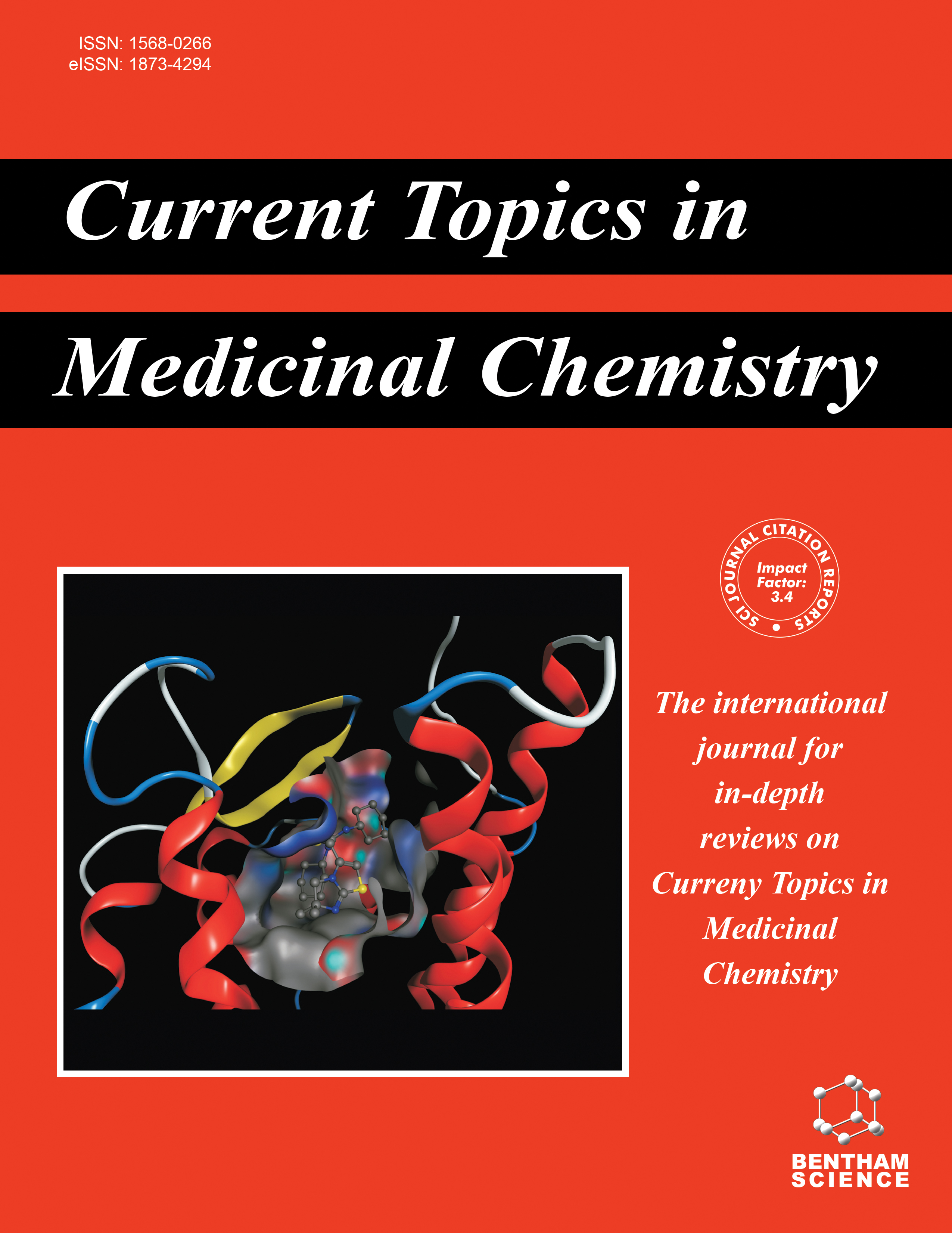- Home
- A-Z Publications
- Current Topics in Medicinal Chemistry
- Previous Issues
- Volume 24, Issue 19, 2024
Current Topics in Medicinal Chemistry - Volume 24, Issue 19, 2024
Volume 24, Issue 19, 2024
-
-
Noncoding RNAs in Alzheimer's Disease: Overview of Functional and Therapeutic Significance
More LessAlzheimer's disease (AD) is a multifactorial disorder resulting from the complex interaction between genetic, epigenetic, and environmental factors. It represents an impending epidemic and lacks effective pharmacological interventions. The emergence of high throughput sequencing techniques and comprehensive genome evaluation has uncovered a diverse spectrum of noncoding RNA (ncRNA) families. ncRNAs are the critical Read More
-
-
-
GLP-1/GIP Agonist as an Intriguing and Ultimate Remedy for Combating Alzheimer's Disease through its Supporting DPP4 Inhibitors: A Review
More LessBackground: Alzheimer's disease (AD) is a widespread neurological illness in the elderly, which impacted about 50 million people globally in 2020. Type 2 diabetes has been identified as a risk factor. Insulin and incretins are substances that have various impacts on neurodegenerative processes. Preclinical research has shown that GLP-1 receptor agonists decrease neuroinflammation, tau phosphorylation, amyloid dep Read More
-
-
-
Navigating the Alzheimer's Treatment Landscape: Unraveling Amyloid-beta Complexities and Pioneering Precision Medicine Approaches
More LessAuthors: Mohsina Patwekar, Faheem Patwekar, Shahzad Khan, Rohit Sharma and Dileep KumarA variety of cutting-edge methods and good knowledge of the illness's complex causes are causing a sea change in the field of Alzheimer's Disease (A.D.) research and treatment. Precision medicine is at the vanguard of this change, where individualized treatment plans based on genetic and biomarker profiles give a ray of hope for customized therapeutics. Combination therapies are becoming increasingly popular as a way t Read More
-
-
-
Neuroprotective Role of Phytoconstituents-based Nanoemulsion for the Treatment of Alzheimer's Disease
More LessAlzheimer's disease (AD) is the most prevalent form of neurodegenerative disorder (ND), affecting more than 44 million individuals globally as of 2023. It is characterized by cognitive dysfunction and an inability to perform daily activities. The progression of AD is associated with the accumulation of amyloid beta (Aβ), the formation of neurofibrillary tangles (NFT), increased oxidative stress, neuroinflammation, mitoch Read More
-
-
-
Recent Advances in the Treatment and Management of Alzheimer's Disease: A Precision Medicine Perspective
More LessAbout 60% to 70% of people with dementia have Alzheimer's Disease (AD), a neurodegenerative illness. One reason for this disorder is the misfolding of naturally occurring proteins in the human brain, specifically β-amyloid (Aβ) and tau. Certain diagnostic imaging techniques, such as amyloid PET imaging, tau PET imaging, Magnetic Resonance Imaging (MRI), Computerized Tomography (CT), and others, can detect bio Read More
-
-
-
Computational Investigation of Novel Compounds as Dual Inhibitors of AChE and GSK-3β for the Treatment of Alzheimer's Disease
More LessAuthors: Saurabh G. Londhe, Mangala Shenoy, Suvarna G. Kini, Vinayak Walhekar and Dileep KumarBackground: Alzheimer's disease (AD) stands out as one of the most devastating and prevalent neurodegenerative disorders known today. Researchers have identified several enzymatic targets associated with AD among which Glycogen synthase kinase-3β (GSK-3β) and Acetylcholinesterase (AChE) are prominent ones. Unfortunately, the market offers very few drugs for treating or managing AD, and non Read More
-
Volumes & issues
-
Volume 25 (2025)
-
Volume 24 (2024)
-
Volume 23 (2023)
-
Volume 22 (2022)
-
Volume 21 (2021)
-
Volume 20 (2020)
-
Volume 19 (2019)
-
Volume 18 (2018)
-
Volume 17 (2017)
-
Volume 16 (2016)
-
Volume 15 (2015)
-
Volume 14 (2014)
-
Volume 13 (2013)
-
Volume 12 (2012)
-
Volume 11 (2011)
-
Volume 10 (2010)
-
Volume 9 (2009)
-
Volume 8 (2008)
-
Volume 7 (2007)
-
Volume 6 (2006)
-
Volume 5 (2005)
-
Volume 4 (2004)
-
Volume 3 (2003)
-
Volume 2 (2002)
-
Volume 1 (2001)
Most Read This Month
Article
content/journals/ctmc
Journal
10
5
false
en


